 Image search results - "Ma" Image search results - "Ma" |
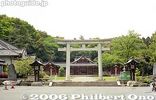
To Kannon-yama
|
|

Dai-hiwatari Festival, Mt. TakaoMore pictures here
|
|
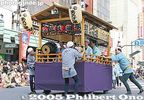
Sadly, the Tokyo Jidai Matsuri no longer held. It used to be held annually on Nov. 3 (Culture Day) in Asakusa, Tokyo.the Tokyo Jidai Matsuri (Festival of Historical Periods) is a parade tracing the history of Tokyo with over 1,600 people dressed in the respective period's costume. This is the lead float playing music. It took about an hour for the parade to reach Kaminarimon Gate.
Lead Float: Edo festival music played by children. Kodomo Edo-bayashi yatai
先導 子供江戸囃子屋台
|
|

The Kannon statue peers over the trees.
|
|

Entrance and stairs going up to Shorinzan, a small hill. 少林山
|
|
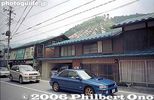
Held during late April to early May, Kanna's Koinobori festival of carp streamers is this town's claim to fame. About 800 colorful carp streamers swim in the sky above a river. Strings of carp streamers viewable from the road.
|
|
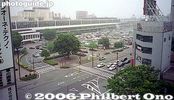
JR Takasaki Station 高崎駅As seen from my hotel.
|
|
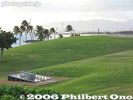
Ehime Maru Memorial in Kakaako Waterfront Park, Honolulu えひめ丸慰霊之碑The memorial is on a slope with a good view of the ocean. It was indeed a suitable place for such a memorial.
|
|
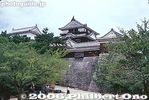
Matsuyama Castle
|
|
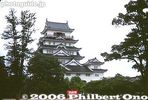
Fukuyama Castle tower
|
|
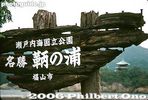
Sign for Tomonoura. Tomonoura is a National Important Traditional Townscape Preservation District (重要伝統的建造物群保存地区).
|
|
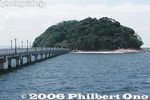
Takeshima island is connected by a bridge. The island is uninhabited, but has a Yaotomi Jinja Shinto shrine (八百富神社) dedicated to goddess Takeshima Benten. Designated as a Natural Monument for its flora which greatly differs from that on shore.
|
|

One of the Big Three Festivals in Tohoku, the Kanto Matsuri has men in happi coats balancing tall paper lantern-bedecked bamboo poles, called kanto, on their foreheads, shoulders, hand palms, or hips. Held on Aug. 3 to 6 near JR Akita Station.A kanto is carried to the festival site before nightfall.
|
|
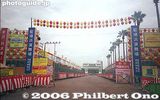
One of Japan's grandest festivals, the Tokushima Awa Odori is a summer dance performed in central Tokushima city. Numerous dance troupes called "ren" appear in a long parade along the city's main streets for four evenings in mid-Aug. About 2 million people see it during the four days it is held. It is like a bon dance to greet the souls of the deceased returning to visit. There are other Awa Odori festivals in Japan, but the one in Tokushima is the original and largest one. "Awa" is the former feudal name of Tokushima. Photo: Entrance to one of the spectator areas called "embujo" (admission charged). 藍場浜演舞場
|
|
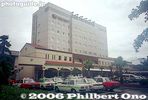
Uwajima Station
|
|

Uwajima Castle tower (Important Cultural Property), Ehime Prefecture.
|
|

Imabari Station
|
|
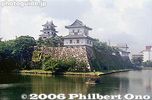
Originally built in 1604 by Lord Takatora Todo, Imabari Castle today is still a very good castle complex with great views of the city and Inland Sea. The castle tower was reconstructed in 1980. 今治城Unfortunately, my camera lens had a fogging problem.
|
|

Kenrokuen is one of Japan's three most famous gardens (besides Korakuen in Okayama and Kairakuen in Mito, Ibaraki). The garden was originally the castle garden for Kanazawa Castle. Katsurazaka Entrance to Kenrokuen Garden 桂坂口
|
|

Before 8 am: Women do a warm-up lap.It wasn't exactly warm, but they had wet suits. Odaiba's water is not exactly crystal-clear clean either.
|
|

Established in 1617, Tsukiji Hongwanji temple is the Tokyo headquarters of the Nishi Hongwanji Jodo Shinshu sect. The present temple, based on Indian architecture, was built in the 1930s.The temple is the only one in Japan which is under the direct control of the sect. Its head priest is the Monshu Abbot himself. April 8 is observed as Buddha's birthday, called Hana Matsuri ("Flower Festival) in Japan.
|
|

One of Kyoto's Big Three Festivals held on May 15. The Aoi Matsuri's colorful procession of over 500 people in Heian-Period costumes start off at the Kyoto Gosho Imperial Palace and head for the Shimogamo and Kamigamo Shrines. Kyoto Gosho Imperial Palace 京都御所: The first ox carriage waits for the procession to start. The ox carriage is called a gissha. 牛車
|
|

The Kusatsu Shukuba Matsuri Festival is held on April 29 to celebrate Kusatsu's history as a post town on the Nakasendo and Tokaido Roads. Numerous events and activities are held such as flea markets, street & stage performances, and Japanese danThis was the first time I saw hula dancing in Shiga. Surprised to see hula dancing (Kusatsu Station plaza).
|
|

Hino's most prominent shrine is best known for the Hino Matsuri festival on May 2-3. The shrine was originally atop Mt. Watamuki, Hino's tallest mountain. It was moved to its present location in 796.
|
|
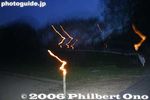
Held annually on May 4, the Misaki Shrine Fire Festival (hi-matsuri) has local people carry 2-meter long torches from their homes to the shrie where a 5-meter tall pile of bamboo is lit to make a towering inferno.A taiko drum is also carried and beaten.
|
|

Held on Dec. 2-3 by Chichibu Shrine, Chichibu Yomatsuri is one of Japan's Big Three Hikiyama Float Festivals. Ornate floats are pulled along the city's main streets until they reach a large plaza at night where they are lit with lanterns. Fireworks then serve as the climax. Photo: Seibu Chichibu Station
|
|

Kakegawa Castle as seen from the train
|
|

Yasukuni Shrine during the Mitama Matsuri before dark.
|
|

Inuyama Yuen Station. Closest station to Inuyama Castle on the Meitetsu Line.
|
|

Road to Inuyama Castle
|
|

Kanagawa Prefecture's largest Awa Odori is held annually during the last weekend in July in this city of Yamato. Preview event near Yamato Station.
|
|

Maruoka Castle is Japan's oldest surviving castle tower although it collapsed during the Fukui Earthquake in 1948. Rebuilt in 1955 with most of the original materials. Originally built in 1576 by Shibata Katsutoyo, nicknamed Kasumiga-jo (Misty CastlePhoto: Way to Maruoka Castle from the bus stop.
|
|

Road marker. Established in 1642, Moriyama-juku was the sixty-seventh of the sixty-nine stations or shukuba post towns on the Nakasendo Road. It is the eighth Nakasendo station in Shiga (following Musa-juku in Omi-Hachiman).
|
|

On the Sunday before the second Monday of Jan., 33 hectares of a hill called Wakakusa-yama (seen in the distance here) next to Nara Park is burned at night.The burning hill looks more spectacular from afar, but we went up close.
|
|

Held for two evenings on Aug. 14-15 during the obon season, people light their torches at Gosha Shrine and proceed to Hibarino park where the torches are thrown up to a large pine tree. The more torches get stuck on the tree, the better the next harvest.This is Hibarino park. The pine tree on the right of the small hill is the target for the torches. This park also serves as the Otabisho during the Hino Festival.
|
|

Well-wishers look on as rowers embark for the race taking place at the same venue where the rowing competition was held at the 1964 Tokyo Olympics.
|
|

Kanayama Jinja Shrine is a small shrine within the grounds of the Wakamiya Hachimangu Shrine near Kawasaki Daishi Station. On the first Sun. of April, it holds this now-famous Kanamara Festival nicknamed the Phallus or Fertility Festival. Festival starts at 11 am. But a large crowd was already there well before that time. Entrance to shrine on the day of the Kanamara Festival. (If you're below age 18, please leave now.)
|
|

At 2 pm, the 18 portable shrines gather at the Ohara Fishing Port. 大原漁港に参集
|
|

Ryogoku Kokugikan sumo arena as seen from Ryogoku Station
|
|

Scenery along the way by bus to Ainokura from Shirakawa-go.
|
|

JR Kawagoe Station 川越駅
|
|

Kawagoe Matsuri is a parade of ornate floats during the day and evening in the city's old town of traditional buildings. Around 15 floats appear during the festival. Held on the third weekend in Oct. Main road where the festival will climax in the evening.
|
|

Toyama Castle 富山城
|
|

Entrance to Honmaru Goten palace, Kawagoe Castle.
|
|

Gate to Kitain, a Tendai Buddhist temple. Part of Kawagoe's National Important Traditional Townscape Preservation District (重要伝統的建造物群保存地区).
|
|

Moving the Neputa floats into position.Held during Aug. 1-7, the Hirosaki Neputa Matsuri is without the rowdiness of the Aomori Nebuta Matsuri. Instead of the haneto, there are many children pulling the floats with ropes. The main floats are fan-shaped and more two-dimensional and lantern-like. As with the Nebuta floats, the Neputa floats are handpainted and illuminated from the inside. There are two parade routes which are followed alternately on different nights. On the 7th, there is only a daytime parade from 10:00 a.m. If it rains on any day, the parade may be canceled.
|
|
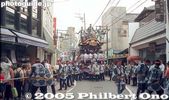
Held in July, Narita Gion Matsuri Festival has ornate floats pulled on the streets of Narita and to Narita-san temple. Pulling a float on the street
|
|

From late April to early May, five long strings of giant carp streamers swim in the air high above the Sagami River in Sagamihara, Kanagawa. This event was started in 1988.
|
|

The biggest taiko drum festival in the Kanto region is held annually in April. Various taiko drum troupes perform for two full days on various outdoor stages in Narita, including the main stage in front of the Narita-san temple.
|
|

JR Kofu Station
|
|

One of two giant kitesThis festival has two giant kites and two smaller (but still large) kites. Resting on its side, the kite was scheduled to fly at 2 pm. The kanji characters read "Michi no Eki" in reference to a new train station built in the town.
|
|
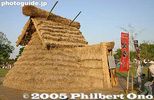
Festival's focal pointThis grass hut is at the center of the festival site which is within the Sakitama Tumuli Park. It will be burned later in the evening for the festival's climax.
|
|
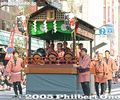
This page is a complete English guide to all the groups that appear in the parade. The parade assembles behind Sensoji Temple and starts at 1:30 pm from Nitenmon gate. The procession then goes down Umamichi-dori street, passes by Matsuya Department Store.先導 子供江戸囃子屋台
|
|
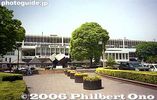
JR Takasaki Station
|
|

Standing 41.8 meters high, equivalent to a 9-story building.
|
|
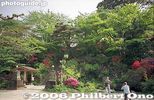
Garden
|
|

Strings of carp streamers latched to the ground from the mountaintop.
|
|
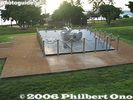
The memorial was unveiled on Feb. 9, 2002, a year after the accident.
|
|

Entrance to castle tower
|
|

Fukuyama Castle tower
|
|

Ferry between Tomonoura and Sensui island.
|
|
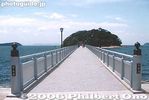
400-meter long bridge to Takeshima island near JR Gamagori Station. The island is made of granite. Circumference is 680 meters. There's a walking path around the island.
|
|

The festival is held along a straight, 800-meter section of San'o Odori Road, a 20-min. walk from Akita Station.In the evening, the main event starts at 6:38 p.m. with a taiko drum-beating performance or minyo dancers on San'o Odori Road. At 7:17 p.m., some 200 kanto are carried into the street to the sound of flutes and taiko drums. At 7:40 p.m. following a brief address by the city's mayor, the performance begins as the kanto are raised all at once.
|
|
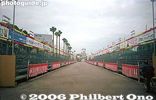
Spectator seats. Admission is 1,000 to 2,000 yen.
|
|
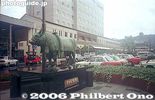
Fighting bull statue in front of Uwajima Station.
|
|

Castle tower
|
|

Imabari Station
|
|
|

Women at the starting line for triathlon
|
|

Kenrokuen is classified as a "kaiyu-shiki teien" (回遊式庭園) or "circular-strolling Japanese garden." It's a common and classic Japanese garden design where you simply walk around the garden, usually around a central pond.
|
|

Tsukiji Hongwanji temple gate with wisteria crest.The emblem is a wisteria flower and symbol of the Jodo Shinshu sect.
|
|
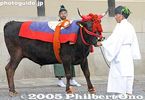
The bull was mooing all the time and was very restless.Do bulls moo or do they snort? This was making a loud noise.
|
|
|
|

Later the shrine became Lord Gamou's family shrine and it was revered by Hino merchants during the Edo Period. This is the Shrine grounds. Map
|
|
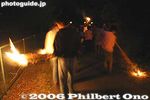
Procession of local residents carrying torches to the shrine. Map
|
|

In front of Seibu Chichibu Station
|
|
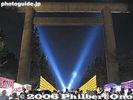
Yasukuni Shrine's main torii during Mitama Matsuri
|
|

The Azuchi Nobunaga Festival's main venue was here, next to Azuchi Castle (hill on right). MAP
|
|

Yotsuashi-mon GateMain gate to enter the castle grounds. A reconstruction.
四足門
|
|

Kiso River with Inuyama Castle in the distance
|
|
|
|

Inuyama Cultural History Museum犬山市文化史料館
|
|

Entrance to castle grounds
|
|

Road marker. Go right for the Nakasendo Road. MAP
|
|

Wakakusa-yama hill in JanuaryWakakusa-yama hill actually has three hills. We see only the first one here.
|
|

Entrance to Gosha Shrine. 五社神社
|
|

Finish line end of the 2000-meter Toda Boat Course.
|
|

Shrine banners and cherries in full bloomThe red banner says "Kanayama Jinja" with an phallus (erect) logo on the top.
|
|

They run around while carrying a portable shrine.
|
|

Crowd outside the Kokugikan await their favorite wrestlers.
|
|
|

JR Kawagoe Station plaza
|
|
|
|

One of the picturesque streets of the city.
|
|
|

Kitain Main hall, Kawagoe
|
|
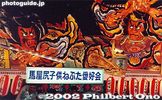
The Nebuta floats are judged in a contest and various awards are given.The Nebuta floats are beautiful objects of light. They are swung left and right and all around. The crowd applaud whenever the Nebuta faces them directly. The sculpture's lights inside are powered by a noisy generator on wheels under the float. The parade progresses quickly and the splendid Nebuta figures pass by one after another. You have to be there in person to feel the power and presence of the giant Nebuta. They represent the very soul and spirit of men. It's enough to give you goose bumps.
The Nebuta floats are judged in a contest and various awards are given. The best ones are preserved at the Nebuta-no-Sato (Nebuta Village) after the festival.
|
|
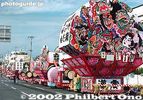
There are three types of floats: the large fan-shaped Neputa, Nebuta-type figures, and the children's small Neputa.I got to Hirosaki early enough before the parade to see the floats lined up at the starting point. Hirosaki is a 30-min. train ride from Aomori, and best known for Hirosaki Castle during cherry blossom season.
|
|

The shrine also holds the Hino Matsuri on May 2-3.
|
|

Pulling the float, Narita Gion Matsuri
|
|

There are five rows of streamers. In Japan, the koi carp is regarded as a symbol of valiant manhood because it swims up the river against the rapids.
|
|
|
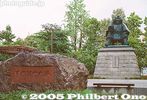
Park in front of Kofu Station.
|
|
|

Offerings
|
|

From Matsuya Department Store, the procession turns right into Kaminarimon-dori street which passes in front of the famous, giant red lantern called Kaminarimon Gate. Lead float with Edo festival music played by children. 先導 子供江戸囃子屋台
|
|
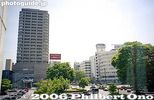
View from JR Takasaki Station's East Exit. 高崎駅東口Takasaki Tower Museum of Art is the tall building on the left.
高崎市タワー美術館
|
|

Built in 1936.
|
|
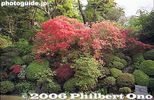
Garden (photos taken in early May)
|
|
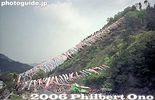
Eight strings of carp streamers hover over the river.
|
|
|
|
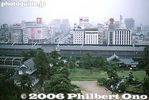
View from castle tower
|
|
|
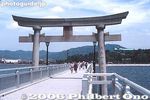
Torii on Takeshima island
|
|
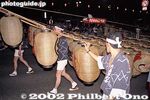
A kanto is carried into the street to the sound of flutes and taiko drums.
|
|
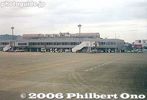
Tokushima Airport
|
|

Crowds already line Tokushima's main street soon to be closed to traffic.
|
|
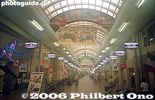
Shopping arcade
|
|

Inside Uwajima Castle tower.
|
|
|
|
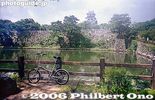
My bicycle
|
|

Temple gate and flag
|
|

Norijiri horseman leads the procession. 乗尻The procession, called Roto-no-Gi (路頭の儀), is actually one of three rites performed during the festival.
|
|

The Kusatsu-juku Honjin is decorated with curtains. MAP
|
|
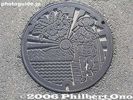
Manhole with the symbol of Hino merchant, Shiga Prefecture
|
|

Torii at Umamioka Watamuki Shrine in Hino, Shiga Pref.
|
|
|

Main street crowd
|
|

Promenade to the shrine
|
|
|

Steps to the castle tower
|
|

Inuyama Castle
|
|

Pre-festival event held in the afternoon, Yamato Awa Odori
|
|

Karakuri Doll Museumからくり展示館
|
|

The stone marker says National Treasure Kasumiga-jo Castle.The castle was a National Treasure until it collapsed in the 1948 Fukui Earthquake. Now an Important Cultural Property.
|
|

Rear of road marker
|
|

Dry grass ready to burn...
|
|

Gosha Shrine torii
|
|

End of the Toda Boat Course, near the 2000-meter finish line.
|
|

Pumping (or humping) the...
|
|
|

Crowd enters the Kokugikan for Musashimaru's retirement ceremony on Oct. 2, 2004.
|
|
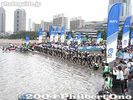
Starting line
|
|

Looks like Suganuma, another village in Gokayama area.
|
|

Hon-Kawagoe Station 本川越駅
|
|

Reconstructed in 1954, modeled after Hikone and Inuyama Castles. Renovated in Nov. 2005.
|
|

Children lead the way for a float at Kawagoe Festival.
|
|

Garden
|
|

Main hall
|
|
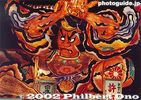
According to one story, the Nebuta has its roots in the 8th century.According to one story, the Nebuta has its roots in the 8th century when there was a rebellion in Ezo (Hokkaido). Ordered by Emperor Kanmu to quell the rebellion, generalissmo Sakanoue no Tamuramaro went to Ezo. However, he failed to capture the elusive chief of Ezo who went into hiding in the mountains.
Sakanoue then set up a trap with large votive lanterns which were lit and accompanied by taiko drums and flutes. This lured the curious Ezo chief out of hiding and led to his capture. The large lanterns were the forerunner of the Nebuta.
|
|

Lunch break
|
|

Tired from walking, Narita Gion Matsuri
|
|

The cable length is 250 meters and 13mmm thick. There are about 1,200 carp streamers. They are reused every year and donated by local families. (I also noticed a few advertising carps.)
|
|
|

Statue of Takeda Shingen.
|
|
|
|

Festival siteIt is a circular site with people sitting along the perimeter.
|
|

Lead float with Edo festival music played by children. The names of the children playing are written on the red lanterns hanging above. Kodomo Edo-bayashi yatai 先導 子供江戸囃子屋台
|
|
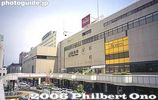
JR Takasaki Station, West Exit 高崎駅西口
|
|

Made of concrete.
|
|
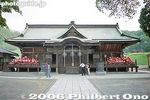
Shorinzan Daruma Temple 少林山達磨寺Daruma offerings on both sides of the temple.
|
|
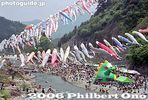
These pictures were taken in May 2003, when Kanna-machi town was newly formed upon the merging of Manba town and Nakazato village.
|
|
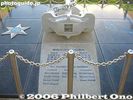
On Feb. 9, 2001, a small Japanese fisheries training boat from Uwajima, Ehime Prefecture was struck by the USS Greeneville submarine as it bolted to the surface off the coast of Honolulu, Hawaii. Nine Japanese high school students, teachers, and crewmen died aboard the Ehime Maru. A year later, a waterfront memorial was built in Honolulu.
|
|
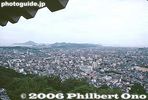
View from top floor
|
|
|
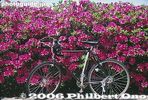
My bicycle somewhere in Gamagori.
|
|
|

Tokushima Station
|
|

These photos were taken in Aug. 1999.
|
|
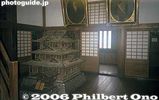
Inside castle tower
|
|
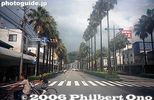
Main road in Uwajima
|
|
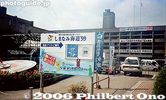
City Hall
|
|
|

8:10 am: And they're off, taking about 30 min. to swim 1.5 km.
|
|

Play room for kids on Hanamatsuri
|
|

10:30 am: Starting point at Kyoto Gosho Imperial Palace 京都御所 出発The procession is ready to depart.
|
|

Shukuba Odori dance in the shopping arcade.Held 11:00 - 12:00
|
|

Stone bridge
|
|
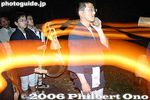
The torch procession rings out.
|
|

Fukuyama Castle from the train
|
|

Floats parked along the main drag.
|
|

Stage entertainment (Azuchi Castle ruins in background).
|
|
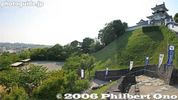
Castle tower
|
|

Spotlights create a silhouette of the statue of Omura Masujiro (1824-1869) 大村益次郎, founder of Japan's modern army.
|
|

Inuyama Castle
|
|
|

Karakuri Doll MuseumThe karakuri dolls, set atop ornate floats, are controlled with strings.
|
|

Maruoka Castle tower
|
|

Marker for the Kabuto-ya inn
|
|

Volunteer firemenThe hill set alight by 300 volunteer firemen and prefectural workers who climb up the hill.
|
|
|

Housing for visiting rowing teams whose school flags are displayed.
|
|

Plum Blossom Queen at Kairakuen StationShe was passing out maps of the garden. It was a nice touch to see two of these kimono beauties greeting us.
|
|

The festival is wildly popular with people from overseas.The shrine had various phallus props to pose with.
|
|

They keep going round and round. Quite rowdy.
|
|

Passing out programs
|
|
|
|

Toki no Kane, Time Bell Tower, symbol of Kawagoe. Part of Kawagoe's National Important Traditional Townscape Preservation District (重要伝統的建造物群保存地区). 時の鐘
|
|
|
|
|

Pagoda at Kitain temple, Kawagoe
|
|
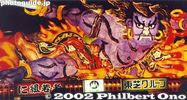
The first Nebuta was a large paper lantern made in 1593.According to historical records, the first Nebuta was a large paper lantern made in 1593 by Lord Tamenobu of Tsugaru (now part of Aomori) for the Bon festival in Kyoto. The Nebuta Festival itself started in the late 17th century.
|
|
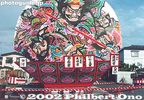
Fan-shaped Neputa float.The painted picture on the front of the Neputa depicts mostly warriors and on the back are beautiful courtesans.
|
|
|
|
|

Lowering the kite
|
|

SpectatorsThese people are sitting in the best area to view the festival.
|
|
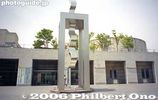
Takasaki Museum of Art 高崎市立美術館
|
|
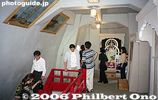
One of 20 Buddha figures inside the Kannon.During New Year's, many people visit the Kannon.
|
|

An Australian praying at the temple
|
|
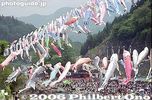
I would say this is one of Japan's top five best places to see carp streamers at Kanna-machi, Gunma.
|
|

Names of the nine Japanese who died
|
|

View from top floor
|
|
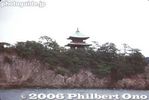
Bentenjima island near Tomonoura.
|
|

JR Gamagori Station. In the foreground is my bicycle.
|
|

The largest kanto is 12 meters high, weighs 50 kilograms, and has 46 paper lanterns. The smaller kanto are 5 and 7 meters high. The kanto symbolizes a ripe rice plant with unhusked golden grains (the paper lanterns). The festival is therefore a prayer for a good harvest.
|
|

In front of Tokushima Station
|
|
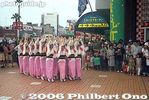
Pre-festival warm-up performance.
|
|
|

View from top floor
|
|
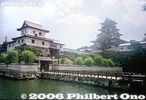
Imabari Castle 今治城
|
|
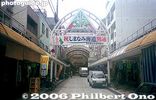
Shopping arcade with Shimanami bannerImabari is on one end of the bridges linking Shikoku and Honshu.
|
|
|

Hanamatsuri altar
|
|

The procession basically consists of two columns: The Hon-retsu which includes the procession's highest-ranking official called Chokushi. It consists of men. The second and longer column is the Saio-dai-retsu consisting of women.
|
|

Start of Kusatsu Jidai Gyoretsu Procession 草津時代行列
|
|

Stone bridge
|
|

Towering inferno of bamboo on fire. The shrine has a 5-meter tall pile of bamboo which is lit to make a towering inferno within the shrine grounds. Very dramatic.
|
|
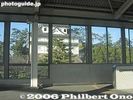
Fukuyama Station (shinkansen)
|
|

Ornate float is pulled along the streets toward Chichibu Shrine.
|
|

A bon dance around the base of the statue.
|
|

Demonstration of matchlock guns, Azuchi Nobunaga Festival in Azuchi, Omi-Hachiman.
|
|

Stairs to Kakegawa Castle tower
|
|

Haritsuna Shrine
|
|

Yamato Station
|
|

Entrance to Urakuen GardenThis garden has a few tea houses including one called Jo-an, a National Treasure. THe garden is close to Inuyama Castle and worth a visit. Admission 1,000 yen.
有楽苑
営業時間 9:00〜17:00(3/1〜7/14 ・ 9/1〜11/30)
9:00〜18:00(7/15〜8/31)
9:00〜16:00(12/1〜2/末日)
休日 無休 入場料 大人1,000円(呈茶別500円)
〒484−0081
愛知県犬山市御門先1
TEL 0568(61)4608
交通 名鉄犬山線犬山遊園下車徒歩7分
|
|

Maruoka Castle tower
|
|

Old Nakasendo Road and Dobashi Bridge. Supposedly, this is the bridge from where Hiroshige drew his print of Moriyama-juku.
|
|

Bamboo torches and bamboo broomsThe bamboo torches is filled with kerosene and plugged with cotton cloth. They are used to set the hill afire. The bamboo brooms are used to spread the fire or extinguish it. The brooms burn up by the end of the festival.
|
|
|

Plum Blossom Queen
|
|

Boat landing near finish line.
|
|

Dickhead hat. Actually, I don't know what they call it, but that's what I call it.
|
|
|

Musashimaru at the entrance
|
|

Entry road to Ainokura village. Bus stop shelter on right.
|
|

Toyama Castle
|
|

There is a bell at the top which is rung 4 times a day. The bell or gong looks like a temple bell.
|
|
|
| 39823 files on 159 page(s) |
1 |
 |
 |
 |
 |
|